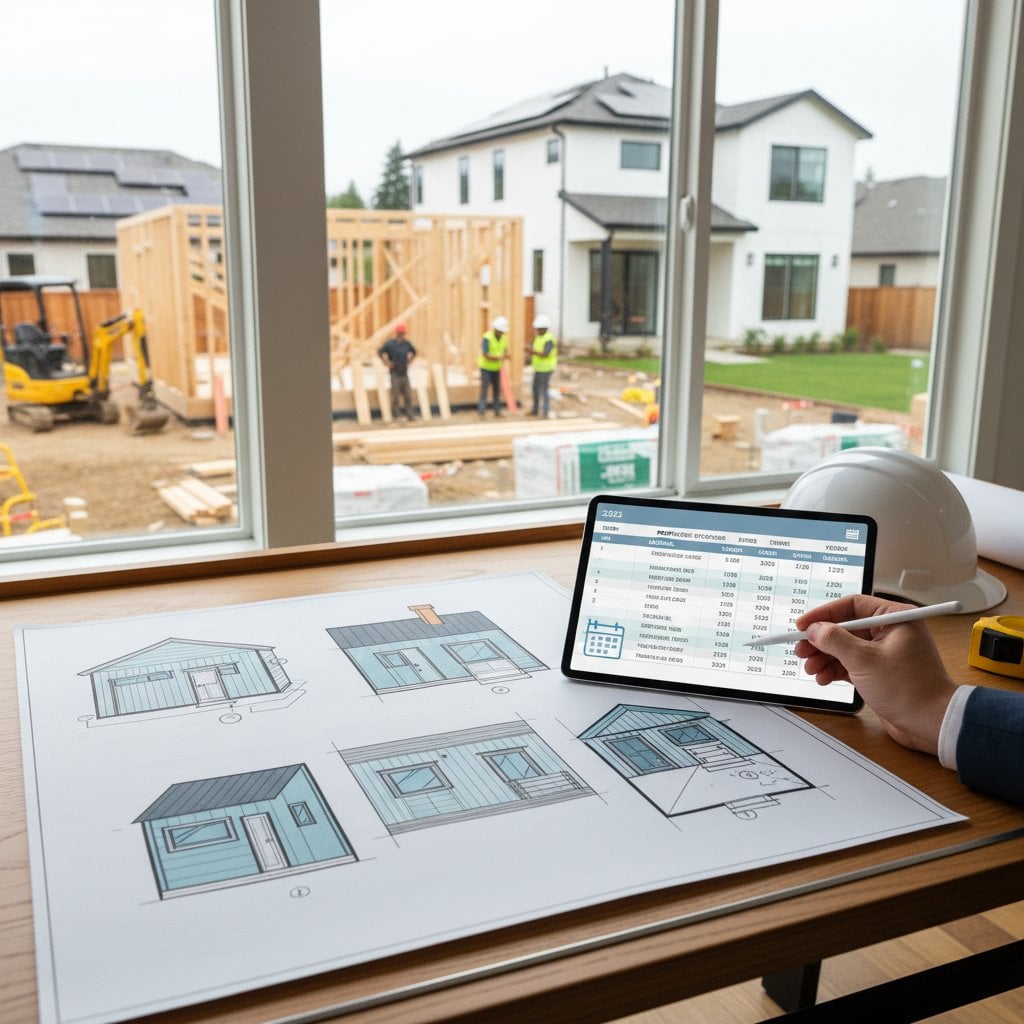Cut Months Off Permits: Faster Builds in 2025
Building projects frequently encounter delays well before construction starts. The permit process often represents the primary bottleneck. Homeowners, builders, and developers face extended timelines and increased expenses due to prolonged approvals. This article outlines strategies to accelerate permit approvals, reduce lead times, and maintain project schedules.
Clear documentation, effective coordination, and proactive communication form the foundation for minimizing downtime. These elements enable a smoother transition from planning to active building phases.
Why Permitting Delays Occur
Delays in permitting typically arise from three key factors: incomplete applications, ambiguous project specifications, and extended review periods involving multiple departments. Municipalities mandate distinct evaluations for zoning compliance, environmental standards, structural integrity, and utility integrations. Omissions in documentation or discrepancies in plans often necessitate repeated feedback cycles.
Minor oversights, such as an absent site survey, an expired engineering certification, or imprecise material descriptions, can extend timelines by several weeks. A thorough grasp of the approval sequence allows for more strategic planning and the avoidance of avoidable holdups.
Principles of Streamlined Approval
Achieving faster permitting hinges on meticulous preparation and accuracy. A comprehensive, uniform, and reviewer-friendly submission package navigates the system efficiently. Approach the application as a cohesive technical dossier, where each element logically interconnects and demonstrates full compliance from the outset.
Numerous municipalities provide online submission platforms that automatically detect incomplete sections, thereby lowering rejection risks. For areas dependent on physical submissions, adopt a comparable methodical structure by sequencing documents logically and applying precise labels.
1. Assemble a Comprehensive, Well-Organized Package
Prior to submission, verify compliance with all stipulations multiple times. Essential components of a robust package generally encompass:
- Architectural blueprints featuring explicit scales and legends
- Structural schematics certified by a qualified engineer
- Site surveys delineating boundaries and required offsets
- Detailed specifications for external cladding, roofing systems, and thermal barriers
- Energy efficiency certifications, where mandated
- Valid contractor credentials and proof of insurance
Uniformity and clear labeling across documents minimize the time reviewers allocate to locating details. Incorporate a straightforward cover page that enumerates all enclosures and their corresponding locations. This practice alone can shave days from the evaluation duration.
2. Engage Local Officials Early
Initiate dialogue with the building department prior to formal submission to uncover potential obstacles. Inquire about prevailing processing durations, essential forms, and frequent denial triggers. Certain offices facilitate pre-submission consultations, during which preliminary sketches can receive initial assessments.
Such interactions permit design modifications before official filing, obviating the need for substantial alterations subsequently. Cultivating a professional demeanor from the beginning fosters positive relationships with evaluators, facilitating more fluid exchanges as the process unfolds.
3. Leverage Expedited Review Options
A growing number of municipalities implement accelerated or priority review tracks for designated project categories. These initiatives favor modest residential constructions, renovations, or initiatives achieving sustainability benchmarks in energy use or ecological impact. Eligibility demands adherence to defined parameters, including restricted building areas, negligible environmental disruption, or utilization of vetted materials.
Although expedited services incur additional charges, the resultant time efficiencies frequently justify the expense. For builders overseeing portfolios of developments, trimming weeks from approvals liberates capital and curtails carrying expenses. Confirm availability and precise prerequisites through direct inquiry with the local authority.
4. Align Design and Engineering Efforts
Seamless team collaboration proves more effective than isolated measures in compressing permit timelines. When architects, engineers, and contractors access identical digital files, discrepancies emerge prior to filing.
Consider a scenario where an engineer's revised foundation diagram contrasts with the architect's retained prior configuration; such inconsistencies prompt reviewer notations. Centralized digital repositories guarantee uniform versions among participants, mitigating revision demands and upholding narrative coherence throughout visuals and analyses.
5. Stay Informed on Local Code Revisions
Building regulations evolve at intervals, with variations across jurisdictions in adopted editions. Plans predicated on obsolete standards may necessitate complete refiling. Prior to design completion, ascertain the operative code version for your locality.
This detail appears on the building department's online portal or via consultation with a reviewer. Alignment with contemporary mandates not only hastens approvals but also streamlines subsequent on-site verifications.
6. Streamline Project Scope as Feasible
Elaborate configurations incorporating diverse structural elements, substances, or bespoke attributes invite prolonged scrutiny. To expedite commencement, contemplate staged submissions. For example, secure initial clearance for the core edifice, deferring ancillary features like patios, secondary dwellings, or landscaping.
Simplified architectures diminish the involvement of specialized examiners. Projects of reduced complexity accelerate through approvals, particularly suiting homeowners eager to initiate core work ahead of elaborating peripherals.
7. Monitor Application Status Diligently
Post-submission, refrain from presuming automatic progression. Most departments furnish online tracking capabilities. Routine checks enable prompt detection of supplemental information requests.
Upon receipt of a clarification directive, furnish targeted, succinct responses without delay. Centralize all exchanges in a dedicated repository, logging timestamps, personnel involved, and notations. This documentation promotes responsibility and accelerates resolutions during lulls.
8. Foster Ties with Inspection Personnel
Inspectors typically operate within the reviewing entity. Constructive engagement mitigates later ambiguities. Awareness of a project's solid documentation and adherence encourages efficient handling of on-site adjustments.
Solicit guidance on inspection protocols and preparatory materials pre-construction. Accurate sequencing of tasks averts redundant visits, potentially sparing days or weeks in delays.
9. Engage Permit Expediting Services
Specialized expediters manage filings, oversight, and agency interactions. Their familiarity with departmental workflows enables preemptive identification of gaps.
While fees apply, the temporal gains prove substantial for expansive or business-oriented endeavors. Established networks with municipal employees and adept presentation techniques often yield quicker evaluations. This service merits consideration for deadline-constrained initiatives.
10. Integrate Digital Inspection Methods
Progressive municipalities transition to virtual inspections, substituting imagery or recordings for select physical assessments. This modality hastens clearances for phases like skeletal framing, barrier installations, or internal completions.
Verify stipulations early if available in your area. Virtual scheduling frequently supports rapid, same-day validations post-upload. Proactive adoption curtails inter-phase idle times.
Accelerate Your Projects Through Permit Mastery
Efficient permitting relies on thorough groundwork, transparency, and ongoing dialogue. Present your submission as a narrative blueprint of the endeavor, guiding reviewers toward unhesitating endorsement.
Maintain meticulous organization, document harmony, and consistent outreach to authorities. These practices empower swift progression, whether addressing isolated upgrades or expansive construction series.










